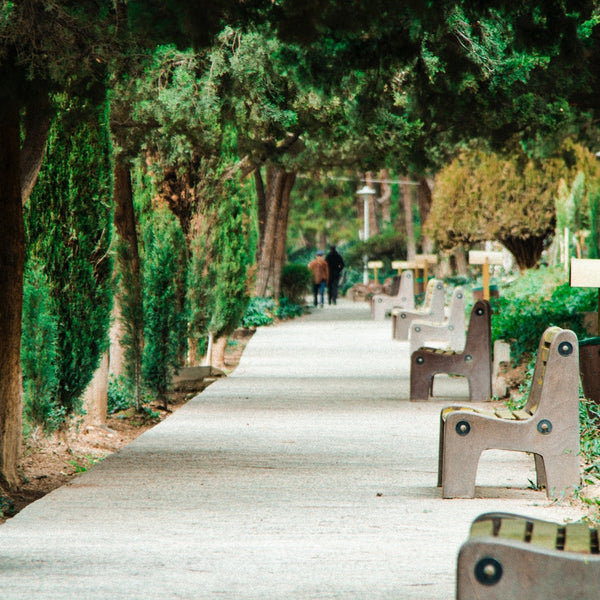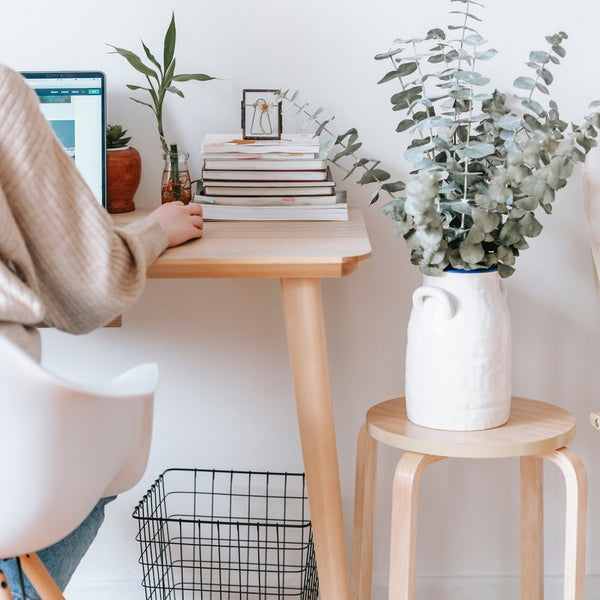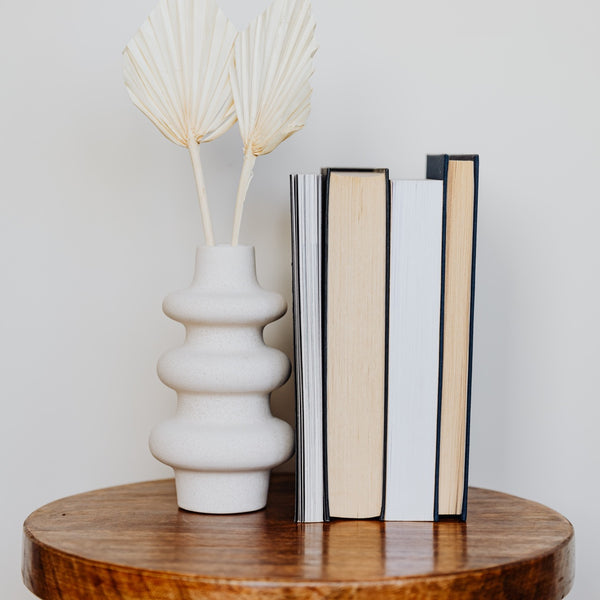Yoga Teachers Weigh In On Their Favorite Asanas

Asana is only one of the eight limbs of Yoga, but too often it gets all the glory. It's true, Hatha moves benefit the body. They're also meditation in action, contributing to something much larger. Oftentimes in class you may flow from Down Dog to Plank, to Cobra, in one fell swoop. And while that kind of vinyasa feels invigorating, the downside is, by turning yoga into aerobics, much of its meaning becomes obscured.
Mindfulness and yoga are symbiotic. So in an effort to create awareness and deepen your yoga practice, we’ve asked a handful of yoga instructors to share a favorite asana. Below, each teacher instructs and reflects on the beauty and benefits of that pose.

*Caution: make sure it is safe for you to practice Yoga. And be sure to fully warm up before practicing a pose. If you experience pain or discomfort, come out of the pose right away.
Dr. Tequilla Hill - Child's Pose (Balasana)

Licensed Psychotherapist, yoga + meditation teacher, Dr. Tequilla Hill, specializes in gentle & restorative yoga, which she meshes with psychotherapy. “I give students permission to soften around the edges, to let go of doing, and enjoy a moment of just being,” says Dr. Hill.
Child's pose is special to the mindful doctor because it “reminds me to be gentle with myself, slow down, and come back to myself without judgment.”
Instructions
Connecting with the breath, take 10 deep belly breaths. Begin in Table Pose with the tops of your feet on the earth, hip-width apart. Lower your hips toward your heels, resting your chest onto your thighs and forearms onto the earth. If necessary, separate knees to allow your abdomen to rest comfortably.
Adjust your elbows as needed in order to place your forehead onto the earth or onto the backs of your hands. If comfortable, extend your arms alongside your body, palms facing upward or arms extended in front.
Relax your shoulders away from your ears, widening them to create space between your shoulder blades. With each inhalation, fill your body with breath and energy. With each exhalation, allow all the tension to be released into the earth.
Modifications & Cautions
Beginners: use blankets, bolsters or rolled up towels under the knees, under the hips, and/or under the chest and head to facilitate support and comfort.
For pregnancy: use the modifications with knees apart to avoid pressure on the abdomen.
Knee issues: use support under knees with blankets or towels.
Benefits
Balasana is a resting pose that can precede or follow any asana. Facilitates flexion of the spine, hips, and knees. Releases tension in the lower back. Massages the abdominal organs, kidneys and adrenal glands. Good for menstrual cramps. Heals and rejuvenates the entire body. Cultivates safety and serenity.
Vanessa Tikaani - Forward Fold (Uttanasana)

Vanessa Tikanni teaches Hatha/Yinyasa (not Vinyasa) styled yoga. Tikanni says her focus centers around “students being able to actively engage muscles through asanas to build strength & flexibility. Also, how asanas can be modified to fit each person's needs in their practice.”
What makes Forward Fold special to Tikaani? A highly versatile asana, “You can modify it in so many ways to meet each student's needs. It is a great way to develop balance, really feeling your body root into the mat so you can come forward and down,” says Tikaani.
Instructions
Begin by engaging the core in a standing position (feet together, thighs squeezing towards each other). Lift your kneecaps so your thighs are nice & active. Root down into the mat with your feet.
Hinge from the hips and begin to come forward, leading with the chest, and eventually down, planting the palms flat on the mat.
Whether your legs are straight, or knees are bent, you can get so much more from Forward Fold by doing a cow tilt versus rounding your spine like most do. If knees are bent, bend them enough that your chest is touching your thighs. Slowly, see if you can straighten your legs a little more while keeping the chest to thigh connection.
Palms are on the mat, flat, engaging the fingertips by gripping them slightly on the mat. Try to keep the weight in the toes versus back in the heels. This gives the pose so much more value in terms of increasing flexibility.
Modifications & Cautions
Always modify and don’t push yourself too far or else you will get injured. If your hamstrings are not ready for the full expression BEND those knees!
Benefits
The pose strengthens your thighs and knees while increasing flexibility in the hamstrings, and calves. It is also helpful for creating length in the spine and helping to relieve tension in neck/shoulders.
Sienna Melissa - Bridge Pose (Setu Bandha Sarvangasana)

Sienna Melissa teaches cannabis yoga, vinyasa, and meditation, both in a group setting and one-on-one. According to Melissa, Bridge Pose is “a really special shape because it gives you an opportunity to physically soften the muscles and the defense around your heart, at the same time, work through the difficulty of the backbend. And you get to work this out on your mat so that in life, if you find yourself navigating rough waters, you know you can keep your heart open and receive love from outside to keep you going.”
Instructions
Lying flat on your back, bend the knees, and plant both feet hip distance apart on your mat, arms long by your sides.
Keep the soles of the feet and palms of the hands pressing firmly into your mat. Use a deep inhale to lift the hips, low and middle back up and off of the mat.
Send the knees forward energetically and feel for an opening across the chest and belly. Stay here for a few breaths... gently roll your spine back onto the mat.
Repeat this 3 or four times or stay 5 minutes in a supported version.
Modification
Follow the same instructions but once the hips are lifted, place a block under your sacrum, that spot where your back meets your butt, and rest here as long as you'd like. Keep the knees reaching forward and feet planted on the mat but allow your upper body to become softer and more open. Breathe deeply.
Benefits
The pose can help you increase lung capacity, and improve circulation. Backbends help you feel refreshed as they activate your nervous system and make your brain feel alert. The grounded quality from your feet and shoulders holding you against the mat allows you to feel safe, encouraging deep rest and relaxation.
Larry Mangel - Half Moon Pose (Ardha Chandrasana)

Owner of Shanti Yoga and Ayurveda, Larry Mangel teaches Ayurvedic Yoga, which “adjusts hold times and poses to help balance what is going on in the body and adjusts for seasonal effects,” says Mangel, whose classes are currently being taught online.
As for Half Moon, “I love how this pose helps me open up in all directions while grounding down into the earth. It helps build strength for more complicated balances,” says Mangel.
Instructions
Enter Half Moon Pose from Trikonasana (Triangle pose). After you feel stable, bend your right knee and place your right hand on the floor, or a block, 8-12” in front of your right foot. Stabilize here.
As you exhale, shift your weight to your front hand and foot, carefully raising your left leg to 90 degrees, and turn your foot to 90 degrees. If possible, raise your left arm straight up. If your balance feels okay, look up at your top hand.
Keep both legs straight and strong as if you were pushing into the wall behind you. Shoulders and arms are straight and lengthened. Lift the torso and keep extending from the lifted heel though the top of the head. Elongate the spine and rotate the chest towards the ceiling.
With every inhalation... feel your standing leg firmly grounded, growing through your arms and legs as you extend your spinal column and lighten through your neck and head. Stay for a minimum of 5 breaths.
To exit, bend your right knee and lower your raised leg back to the floor coming back into Trikonasana. Step to the front of the mat. Observe how you feel. Repeat on the other side.
Modifications & Cautions
Avoid this pose if you’ve had a hip replacement and be careful to not hyperextend your knees. Rotate the staining knee outward if there is knee discomfort.
Have a block handy. And use a wall for support and a block, chair or bench, for your supporting hand.
Benefits
Tones the lower region of the spine and the nerves connected to the leg muscles. May also ease lower-back problems, relieving sacrum and sciatica pain, lumbar aches, and help treat gastric issues.



